Things to See & Do in Ephesus
Terrace Houses
1
A highlight of a guided tour of Ephesus is the Terrace Houses. These three terraces were built around 200 BC on the slope opposite the Hadrian Temple. When you visit these houses, you see the best example of Ancient Roman domestic life. During the excavations which began here in 1960’s, fantastic patios, mosaics and frescoes were discovered. It is obvious that these houses belonged to the rich people of Ephesus.
Library of Celsus
2
Take a guided tour of the Library of Celsus which was built in 135 AD by Tiberius Julius Aquilla to honour his father, Celsius Polemaenus, who was Roman Governor of the Province of Asia. The galleries held books which were preserved in marble cases. The sarcophagus in the back courtyard belonged to Celsius and see the fascinating inscriptions on both sides of the library's entrance. This is the best places to take a selfie!
Great Theatre
3
Take a guided tour of this 70m long and 30m wide Great Theatre. Construction started during the reign of Emperor Claudius (41-54 AD) and was completed by Emperor Trajan (98-117). Its stage that is still in good condition has three floors which were once covered with marble and could hold 25.000 people. In front of the theatre, the remains of a fountain dating from the Hellenistic period can be seen.
Temple of Serapis
4
See the Temple of Serapis by guided tour. This temple was built in the 2nd century AD and dedicated to the Egyptian God Serapis. Its ornate facade which was 29m long was decorated with eight columns 15 m. high supporting Corinthian capitals made of marble blocks. Explore the two-storeyed thermal baths also constructed in the 2nd century and were restored by a lady named Scholastica in the IVth century.
Marble Street
5
Marble Street is part of the Sacred road running between the Celsus Library and the Great Theater. The Marble street was paved with large blocks of marble and had herring bone slopes.
It ran from the Coressos Temple in the north of the City to the Magnesia Gate in the south. It had an excellent sewer system and was decorated with statues, fountains and marble blocks for resting.
Lower Agora
6
To the south-west of the Great Theatre, you will find the Lower Agora when on a guided tour. It is a very spacious square of approximately 116 meters each way and from it is a collonaded street. The Agora, which means market square, is only partly excavated to date and is said to be a 3rd-century rebuilding of an even earlier structure. Historians say it was once surrounded by a double colonnade which houses shops and offices.
Stadium
7
Built during the reign of Emperor Nero in 54-68 AD. It is 229 m. Long and 29.5 m. wide. Various athletic competitions, chariet and horse races were held here. On its eastern section, there was an arena for the gladiator fights and also cages for the wild animals. Gate of Coressus: To the north-east of the Stadium can be seen the remains of the Gate up to which led one of the two sacred ways to the Artemision.
Temple of the Mother Goddess
8
On the northern slopes of Mount Pion, there are some niches which were used for the worship of the Mother Goddess Cybele. Acropolis: On the right of the road to the west of the Stadium there is a small mound which was the acropolis of Ephesus during the Ionic period.
Gymnasium of Vedius
9
This second century Gymnasium of Vedius is on the slope of a hill. On a guided tour, you can see what remains of the ‘palaestra’ which was a wrestling hall with an arcaded courtyard. The best-preserved part of the Gymnasium is the structure that was built of brick faced marble. Due to it being better preserved, the archaeologists and historians learned interesting details of the internal layout and features.
Odeon (Small Theatre-Concert Place)
10
Constructed in the 2nd century AD. By Vedius and his wife, it is a small theater and concert place containing places for 1500. The gallery in the front dates from the time of Augustus. Tomb of St. Luke: This round building was called by mistake the tomb of St. Luke. Later it was converted into a church.
Double Church
11
Church of the Virgin Mary: Constructed in the second century and converted into a church in the fourth century, it was the first basilica to be dedicated to the Virgin Mary. The Third Oecumenical Council of the Christian world attended by 200 bishops was held here in 431, and the three dogmas of the Catholic church were then proclaimed.
Magnesia Gate
12
This gate dating from the 1st century AD. was the east gate of the City. It had three sections and vehicles passed through the central section. The most important places of defense in a city are certainly its walls and gates. Until the period which we call the Roman Peace (Pax Romana) (the 2nd-3rd centuries AD) the gates and walls of cities were constructed strongly and magnificently in Anatolia.
Temple of Artemis
13
Before you get to Ephesus on a guided tour, your tour may stop at the Temple of Artemis. Nowadays, there is not much left to see, but it was regarded as being among the Seven Wonders of the World and still worth seeing to learn its history. Sadly the few white marble columns are all that remains of the Temple of Artemis which once played a significant role in the social and religious life of Ephesus.
House of the Virgin Mary
14
In 1961 Pope John XXIII made known that ceremonies could be performed in the House of the Virgin Mary discussions about the place were subdued and the number of visitors gradually increased. The house was declared a place of pilgrimage. In 1967 Pope Paul VI and in 1979 Pope John Paul II visited. Nov. 29, 2006, Pope Benedict XVI celebrated Mass at the House of the Virgin Mary in Ephesus.
Basilica of St. John
15
When you take a guided tour of the Basilica of St. John, you will learn that this basilica which resembled a citadel once spread the whole breadth of the hill it is located on. It was once ranked with the Hagia Sophia in Constantinople as being one of the largest churches of the Byzantine Empire. Legend says that St. John is buried under the church. What remains of the basilica are ruins, but you still see its original grandeur.
Grotto of the Seven Sleepers
16
To visit here you may have to take a private tour as it is not always part of the normal tours to Ephesus but because of the legend, it is well worth the visit: Seven young Christian men and their dogs took shelter here from religious persecutors, they woke up 200 years later, thinking it was the next day, when Christianity was accepted and became heroes. The then Emperor erected a church in the caves after their deaths.
Ephesus Museum
17
Once you have been to see the ruins of Ephesus take a guided tour of the Ephesus Museum located in the heart of Selçuk. The highlight for most tourists in the museum is the Gladiator Room where there are exhibits of all the items found during the gladiator cemetery excavation. The carved Artemis statue with its multi-breasted depiction of the goddess is exquisite to see along with many other amazing finds.
Isa Bey Mosque
18
On a guided tour of the Isa Bey Mosque, you will be very impressed with the beautiful architecture that dates back to the 14th century. There are very tall outer walls that surround a large arcaded courtyard. From the courtyard, there is a double domed prayer room. Visitors are allowed to enter the mosque outside of prayer time but everyone must have shoulders and knees covered and women must wear a headscarf.
Sirince Village
19
Located just eight km from Selçuk is the beautiful picture perfect village called Sirince. On a sightseeing tour, you get to see the most spectacular scenery on the journey uphill to the village. The red-roofed stone houses are built on a slope so the image it projects from afar is amazing. This village is mainly small roads and lanes lined with shops and restaurants. A lot of products on sale are items made from the local produce.
Camlik Steam Train Museum
20
Another interesting guided tour to take when you are visiting the area of Selçuk is the Çamlik Railway Museum. This open air museum is very intriguing and consists of old stream engines and railway cars that were active up to seventy to eighty years before. There are many of the steam engines and railway cars that you can climb aboard and explore. This is an especially good tour of children who love trains.
Travel Tips for Ephesus
Best Time To Visit Ephesus
Ideally anytime from October to April is the best time to visit Ephesus. The cooler the weather, the more you can enjoy your private tour and walking around all the historic ruins and archaeological sites. There are fewer crowds too and you feel you get more out of the guided tours. If you do visit during May to September, be sure to have lots of water with you and more importantly a sunhat and suncream.
Typical Costs in Ephesus
The typical costs when visiting Ephesus: entry fees to Ephesus is approximately $11 and entry fees to the Church of the Virgin Mary is approximately $7.50, these prices may fluctuate depending on currency exchange rates. It is recommended to visit both these places with a private guided tour whereby the entrance fees are included along with transport and lunch (in some tours). The shops and restaurants might be slightly more expensive than the closest city
Know Before Visiting Ephesus
When visiting Ephesus make sure you book a private guided tour with a reputable tour operator. Always bring plenty of water with you or be sure to buy some, when you are there, this is vitally important during the extremely hot months as dehydration and sunstroke is a possibility if you are not careful and do not look after yourself. Wear a sunhat at all times and be sure to have applied plenty of suncream before travelling.
Weather in Ephesus
The weeks of July and August are the hottest in Turkey with temperatures rising above 33 degrees Celsius and virtually no rain. June and September have temperatures around 30 degrees Celsius, April, May and October’s temperatures from 22-27 degrees Celsius. January, February, December are the coldest months with temperatures around 14 degrees Celsius and a good bit of rain. Snow can be seen on the hilltops
Travel Tips for Ephesus
Best Time To Visit Ephesus
Ideally anytime from October to April is the best time to visit Ephesus. The cooler the weather, the more you can enjoy your private tour and walking around all the historic ruins and archaeological sites. There are fewer crowds too and you feel you get more out of the guided tours. If you do visit during May to September, be sure to have lots of water with you and more importantly a sunhat and suncream.
Typical Costs in Ephesus
The typical costs when visiting Ephesus: entry fees to Ephesus is approximately $11 and entry fees to the Church of the Virgin Mary is approximately $7.50, these prices may fluctuate depending on currency exchange rates. It is recommended to visit both these places with a private guided tour whereby the entrance fees are included along with transport and lunch (in some tours). The shops and restaurants might be slightly more expensive than the closest city
Know Before Visiting Ephesus
When visiting Ephesus make sure you book a private guided tour with a reputable tour operator. Always bring plenty of water with you or be sure to buy some, when you are there, this is vitally important during the extremely hot months as dehydration and sunstroke is a possibility if you are not careful and do not look after yourself. Wear a sunhat at all times and be sure to have applied plenty of suncream before travelling.
Weather in Ephesus
The weeks of July and August are the hottest in Turkey with temperatures rising above 33 degrees Celsius and virtually no rain. June and September have temperatures around 30 degrees Celsius, April, May and October’s temperatures from 22-27 degrees Celsius. January, February, December are the coldest months with temperatures around 14 degrees Celsius and a good bit of rain. Snow can be seen on the hilltops
Is Ephesus worth visiting?
The ruins are impressive and worth the visit. Exploring the ruins of Ephesus, located just outside of Selçuk in Turkey. Ephesus is an ancient city rich in Greek and Roman history, close to Kusadasi in Western Turkey. It’s also the site of one of the 7 ancient wonders of the world. An ideal day trip from the commercialism of Turkey’s resort locations.
Planning a good trip can be difficult, but one thing to consider is the weather. Ephesus is in an area that gets cold in the winter and hot in the summer, so you don’t want to explore the ruins during those times. The best months to visit Ephesus are April and May, and also October and November. During those four months, the weather in Ephesus is neither too hot nor too cold, so you’ll be sure to enjoy your trip!
Where to stay in Ephesus?
There isn’t a big choice of accommodation in the area, so it’s better to stay in a larger town like Kusadasi or Izmir and visit Ephesus as a day trip by choosing our private Ephesus tours.
How far is Izmir from Ephesus?
Ephesus is around 80km from Izmir. The drive takes about an hour. If you choose Ephesus day trips from Izmir, our tour guides will be glad to help you.
What to wear in Ephesus?
In summer, wear a wide-brimmed hat and light, breathable clothing, preferably with long-sleeves and pants. It gets very hot in the ruins. In winter, bring a jacket. Long pants and a warm sweater might also be required. There are no rules for what to wear, but respect local customs and avoid offensive clothing.
Is it safe to travel to Ephesus?
Kusadasi and Selcuk, the area around Ephesus are safe. In the daytime, you would encounter no problem. Yet, most tourists visit the Ephesus site in the daylight and leave. At night, some areas of the town feel deserted, and you would not be able to visit the attractions.
How do I get from Istanbul to Ephesus?
The distance between Istanbul and Ephesus is 337 miles (560 km) by driving and getting to Ephesus takes 6-7 hours by car depending on the speed. Our recommendation would be to take a flight from Istanbul to Izmir and drive from Izmir Airport to Ephesus. Ephesus is 45 minutes drive from the airport of Izmir. The other way of transportation is to take our all inclusive Ephesus day tour from Istanbul.
What time does Ephesus open?
Ancient City of Ephesus is open from April to October 08.00-19.00. Between November and March 08.00-17.00 hours open.
What port is near Ephesus?
Kusadasi is a voyage port and resort town on Turkey's focal Aegean Sea coast, and found south of Izmir. Kusadasi is likewise a significant ship port and fills in as seaport for Ephesus (old Greek city in Turkey's in Izmir Province). By the way, you can look up our Ephesus tours from Kusadasi port or choose any ephesus tours from cruise ships.




 Private Tour
Private Tour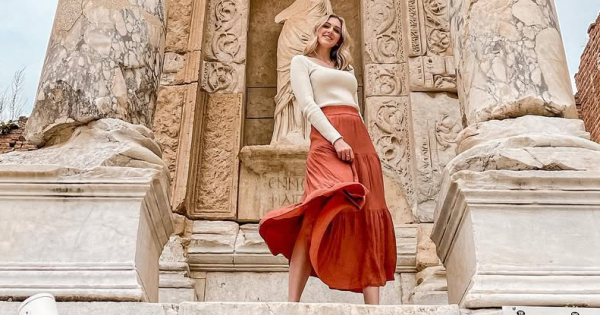
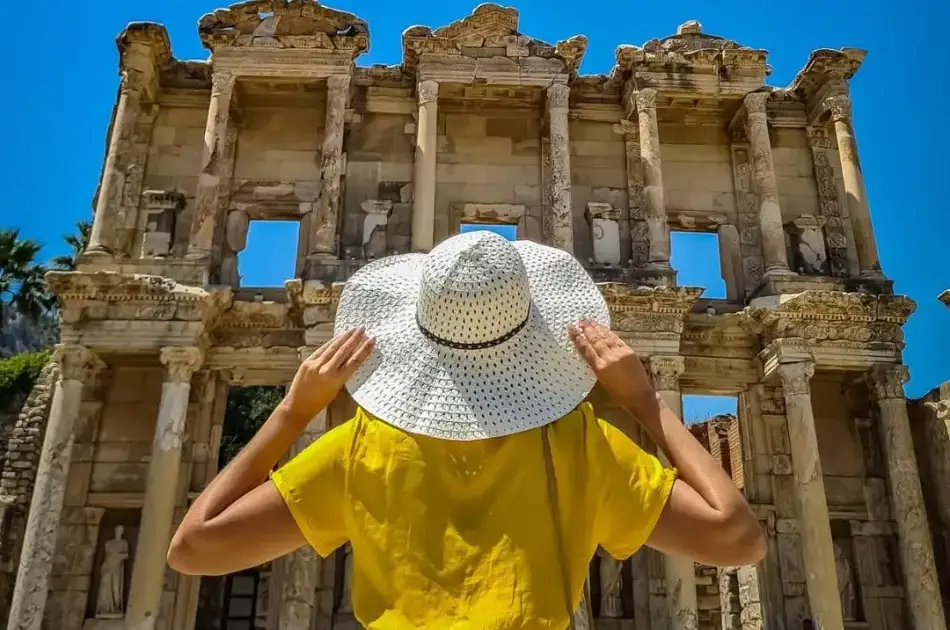
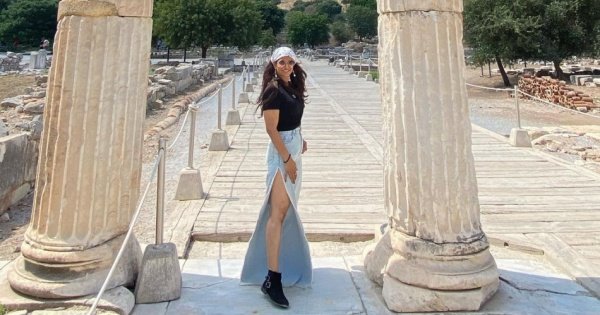
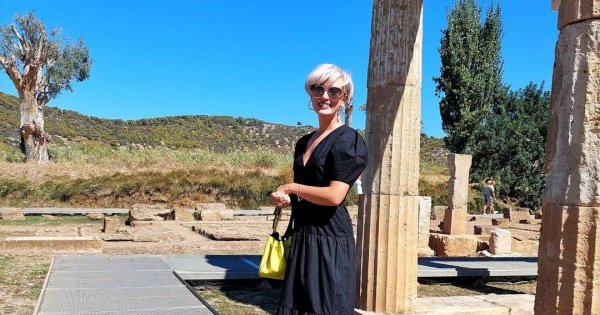


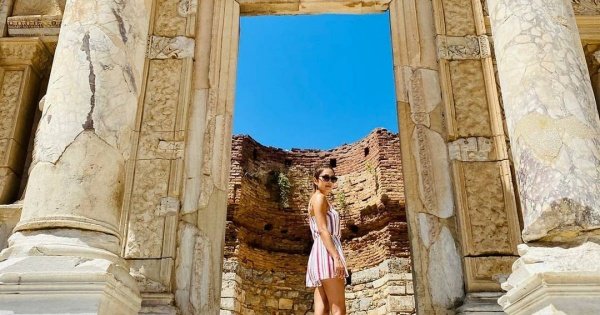

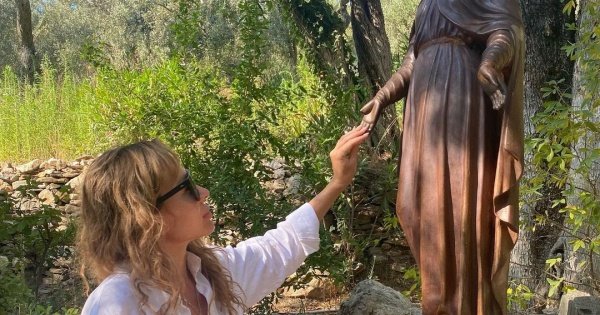




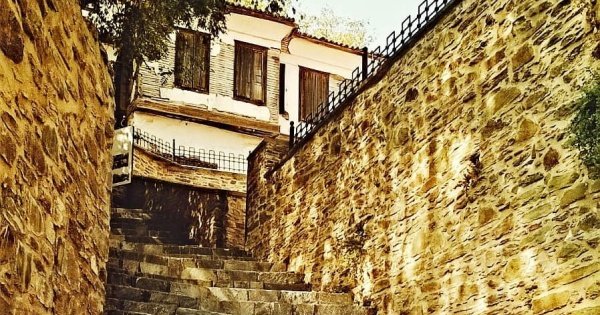
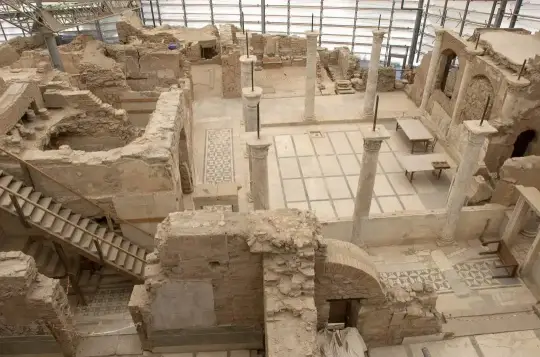
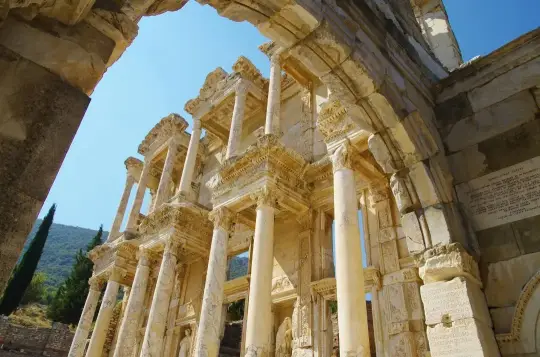



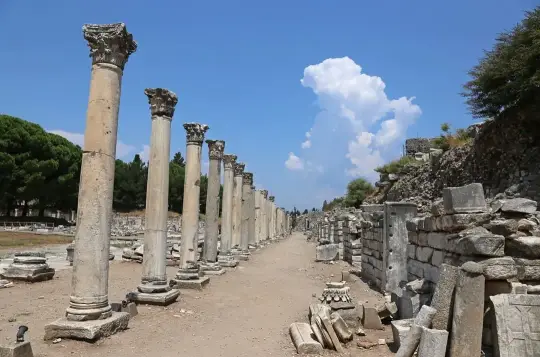



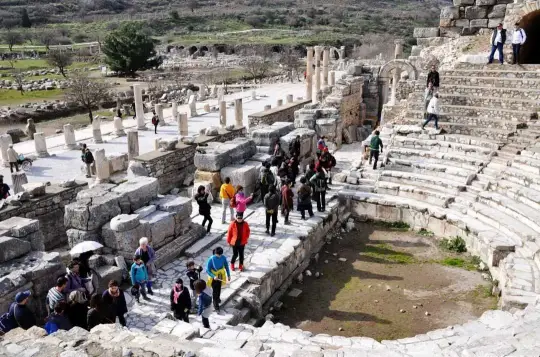
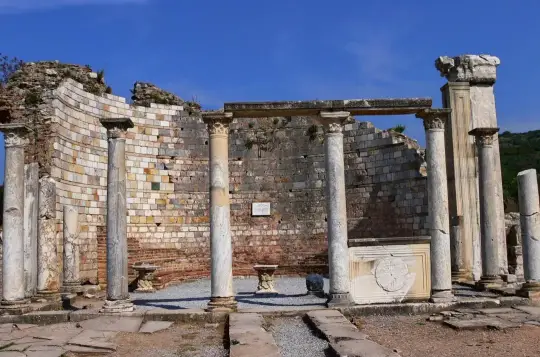
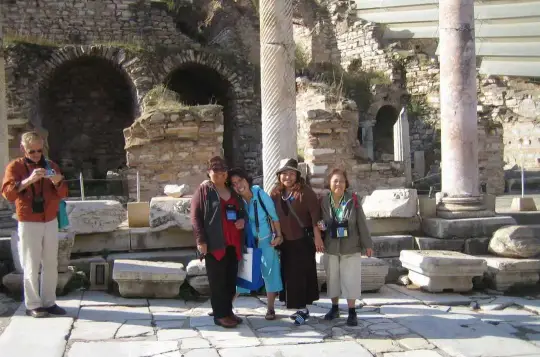
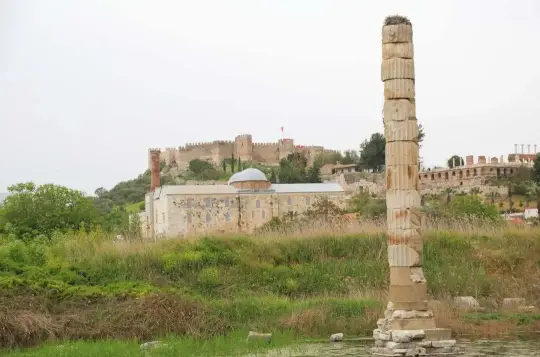



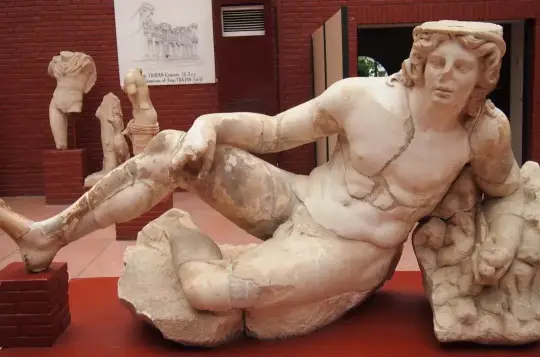
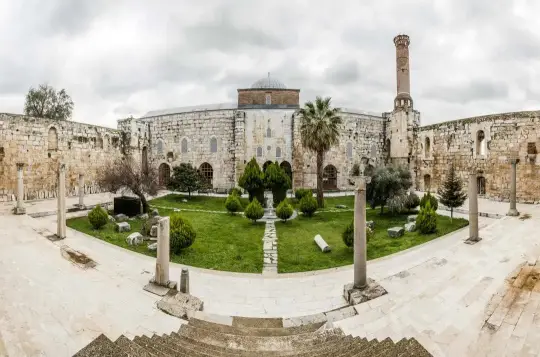


 © Copyright 2025 Private Tour Inc. All Rights Reserved.
© Copyright 2025 Private Tour Inc. All Rights Reserved.